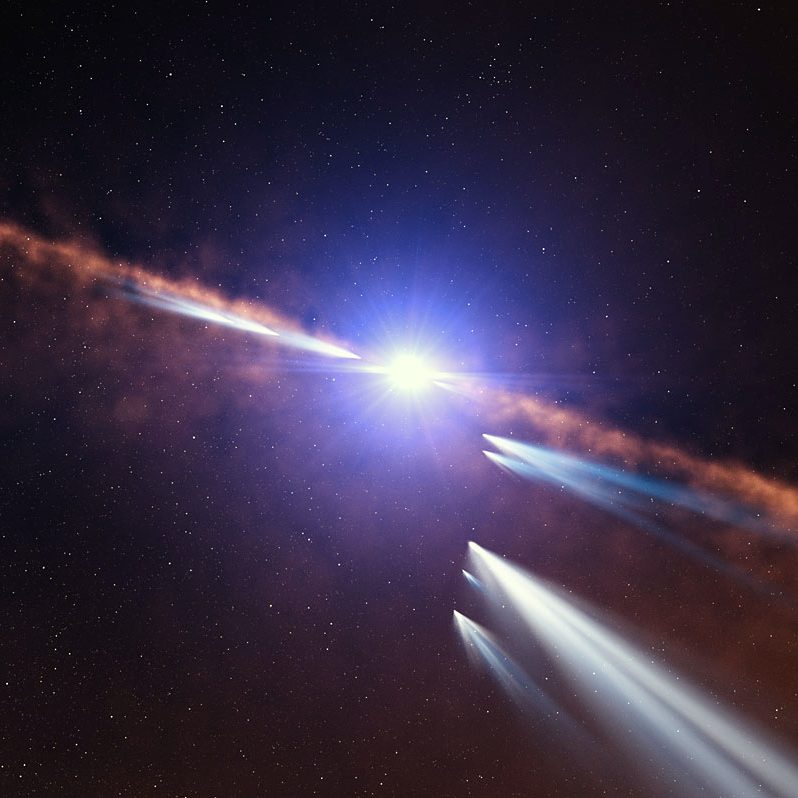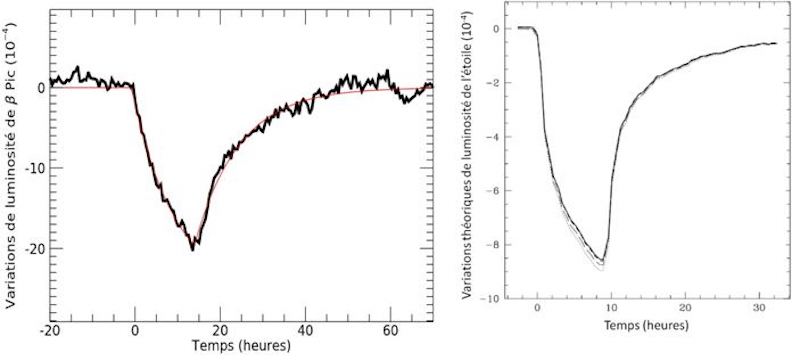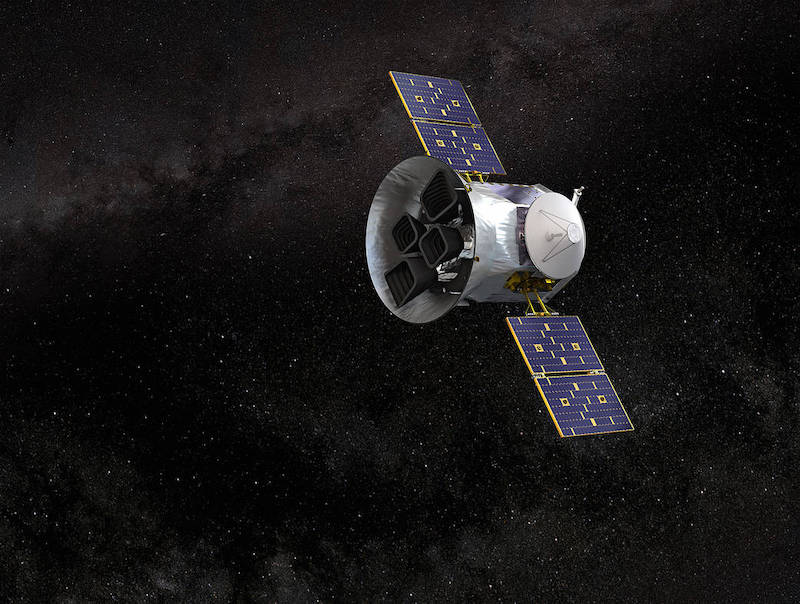
30 exocomets orbiting Beta Pic
Comets are small bodies of rock, ice, dust and gas. They’re common in our solar system. You might have seen one yourself, as it swept into the inner solar system, near our local star. And astronomers have also been finding comets in distant star systems as well. Planets orbiting other stars are called exoplanets. And comets orbiting other stars are called exocomets. Researchers have known for decades that Beta Pictoris – a young, still-forming solar system 64 light-years away – has at least two planets. On May 3, 2022, NASA said that its TESS planet hunter has revealed at least 30 exocomets in the long-studied Beta Pictoris system.
The scientists said they could detect such small bodies at such a great distance by spotting the comet’s long tails, as they crossed the face of their star.
A range of sizes for exocomet cores
We knew other star systems were likely to have comets. Like planets, comets must be born with their stars. And astronomers already had spectroscopic evidence for a few exocomets, going back to the mid-1980s. Plus, they’d found three more comets orbiting Beta Pictoris in 2019.
This time, Alain Lecavelier des Etangs led a team of international researchers, who made the discovery when analyzing data from TESS. The data were collected over a period of 156 days, starting in 2018.
And so – incredibly and for the first time – astronomers were able to measure a distribution of sizes for the nuclei, or cores, of exocomets. That’s impressive, since the comets are so far away (64 light-years). The sizes ranged from about 1.9 to 8.7 miles in diameter (3 to 14 km).
The team published the peer-reviewed results in Scientific Reports on April 28, 2022.

Similarities to our own solar system
Notably, the data from TESS also showed that the distribution of the comets is very similar to that of comets in our own solar system. This indicates that, like here, the Beta Pictoris comets formed from many collisions and breakups of other bodies. This suggests a similar history to our early solar system, where both solar systems gradually sorted themselves out into larger and smaller bodies orbiting their respective stars.
As stated in the paper:
Taken all together these estimates for the solar system comets are in general agreement with the value that we obtained for the Beta Pictoris comets, with some slightly shallower distributions in some cases. This points toward the importance of collisional fragmentation in shaping the size distribution of the exocomets in the younger Beta Pictoris planetary system.
The observed distribution of exocomets in the young planetary system of Beta Pictoris is strikingly similar to the distribution observed in the solar system. This distribution seems to be ubiquitous and is also consistent with the canonical Dohnanyi’s size distribution, which corresponds to the size distribution of a collisionally relaxed population. This indicates that the collisional process with fragmentation cascades is likely one of the dominant processes that shape the population of kilometer-sized bodies in the Beta Pictoris planetary systems.

Beta Pictoris’ planets
The star Beta Pictoris also has at least two still-forming planets. Astronomers discovered Beta Pictoris b, about 11 times the mass and 1.65 times the radius of Jupiter, in 2008. Beta Pictoris c, nine times Jupiter’s mass and an estimated 1.12 times the radius, was found in 2019. In this case, being giant planets not too far away made them relatively easy to detect.
In fact, astronomers have been able to directly image both planets, not an easy feat.

Bottom line: An international team of astronomers has discovered 30 exocomets orbiting the young star Beta Pictoris, 64 light-years away from Earth. This is the first time the size distribution of such small bodies has been measured in a planetary system other than our own.
Source: Exocomets size distribution in the Beta Pictoris planetary system











